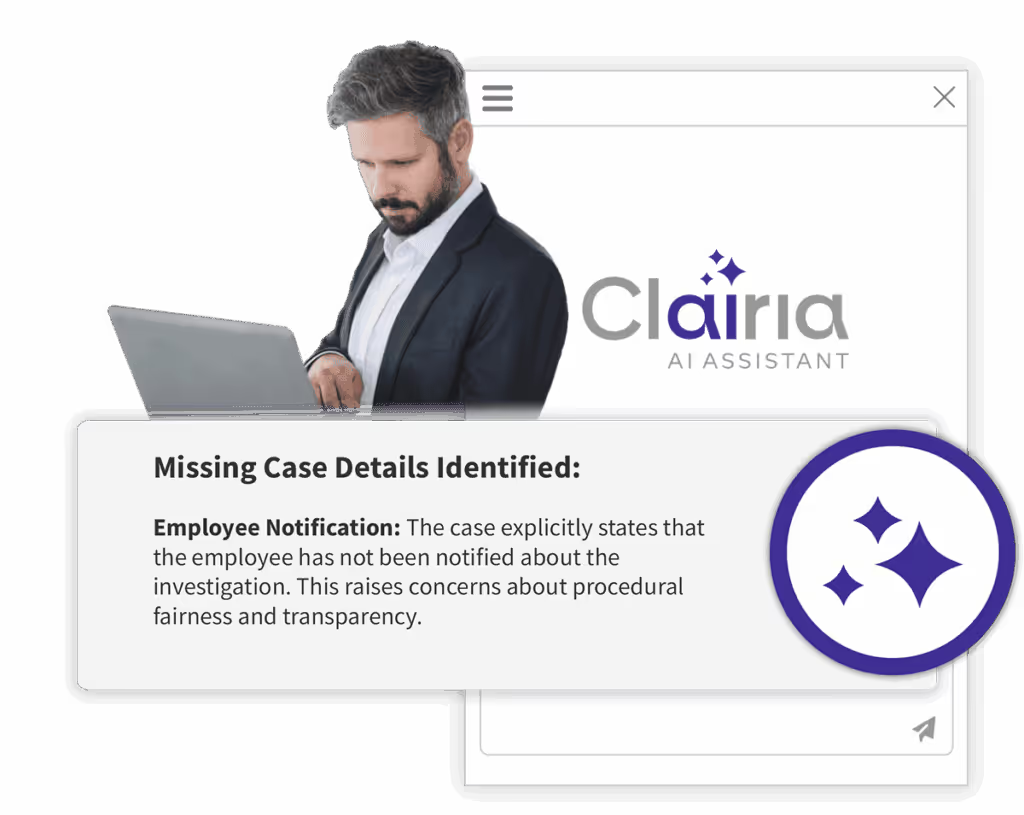Every organization deals with workplace misconduct, but it's almost impossible to catch every incident. Effective reporting and resolution are crucial for maintaining an ethical and healthy organizational culture. However, our recent employee whistleblowing survey highlights a significant "reporting gap" in the US, where, despite a high incidence of witnessed misconduct, a significant portion goes unreported.Understanding the reasons behind this gap and implementing strategies to bridge it is vital for organizations aiming to build trust and ensure accountability.
The Landscape of Misconduct and Reporting in the US
In the US, over 80 percent of employees have witnessed misconduct at work, the highest percentage among the five countries we surveyed. This alarming figure signals a widespread exposure to risk, ethical failures, or policy violations within US organizations. Despite this prevalence, only 58 percent of employees say that their organization has a whistleblower program with clear guidelines on how to report misconduct. This lack of clear reporting infrastructure contributes to a significant disconnect: only about 73 percent of individuals who witnessed an incident went on to report it.This "reporting gap" is profoundly influenced by factors such as fear, distrust, and a lack of clarity on reporting procedures. Our survey found that only half of US respondents would feel comfortable reporting misconduct at their current workplace, with nearly one-third feeling actively unconformable or very uncomfortable. Why? Respondents don't feel protected against retaliation (more on that below).
The Chilling Effect of Whistleblower Retaliation
The most dominant theme among those who did not report workplace incidents was fear of retaliation, with 43 percent of respondents expressing a lack of confidence in their company’s ability to protect whistleblowers. One in three respondents (33.2 percent) claim they've witnessed retaliation against a whistleblower in their workplace.Even if not widespread, the mere perception or memory of such incidents can deter other employees from speaking up. When asked why they didn't report, employees shared:
- "I feared the consequences of [reporting]"
- "I was afraid of retaliation."
- "I was scared I would lose my job."
- "I feared retribution because I was the only person that knew about it."
- "I didn’t want to risk my position or relationships at work."
Witnessing others being punished or sidelined for "doing the right thing" erodes the entire ethical culture of an organization, even among those who never directly experience retaliation. To cultivate a true speak up culture, companies must elevate whistleblower protection to an organization-wide priority. Retaliation is a trust killer, and organizations must actively demonstrate to employees that they will be protected.
Preferred Reporting Methods and the Rise of AI
Companies often (and should) offer various reporting avenues, including web forms, hotlines, and in-person reporting. The survey explored employee comfort levels with each of these methods, revealing interesting insights:
- Phone hotlines registered the highest comfort score with a mean of 3.98 (on a 1-5 scale, 5 being "Very Comfortable").
- Talking to HR recorded the lowest mean at 3.15, notably ranking lower than using an AI chatbot or AI voicebot to report an incident. This suggests a growing acceptance and even preference for AI-driven reporting tools in the workplace, indicating a significant shift in how employees might prefer to report sensitive issues.
Real Whistleblowing Story: OSHA Orders Amtrak to Pay Whistleblower Employee
A powerful example of the critical need for whistleblower protection and the consequences of retaliation comes from a case involving US passenger railway Amtrak. A supervisory special agent in Amtrak's inspector general's office raised concerns about a contractor's competency, specifically regarding fraud and abuse in concrete testing for tunnel projects. Shortly after voicing these safety concerns, the employee received their first negative performance evaluation, and their position was subsequently eliminated, leading to termination when they could not find another internal role.The employee filed a whistleblower complaint with the Occupational Safety and Health Administration (OSHA). OSHA investigated and determined that Amtrak had retaliated against the employee for raising legitimate safety concerns, a violation of the Federal Railroad Safety Act. As a result, OSHA ordered Amtrak to reinstate the employee and compensate them over $892,000 in back pay, punitive damages, compensatory damages, and legal fees. This case highlights the vital role whistleblowers play in uncovering misconduct and ensuring public safety, and also serves as a stern reminder to employers about the legal and financial repercussions that can follow whistleblower retaliation.
How Case IQ Can Help
In conclusion, addressing the reporting gap and ensuring whistleblower protection are not merely compliance exercises but strategic imperatives for organizational health. By prioritizing psychological and social safety in reporting, companies can cultivate a strong ethical culture, build employee trust, and mitigate significant risks.Whether you've got a robust reporting system or are trying to start a speak up culture from scratch, Case IQ's ethics reporting and multichannel case intake help you embrace transparency and empower employees. Learn more about our 24/7 hotline solution here.











